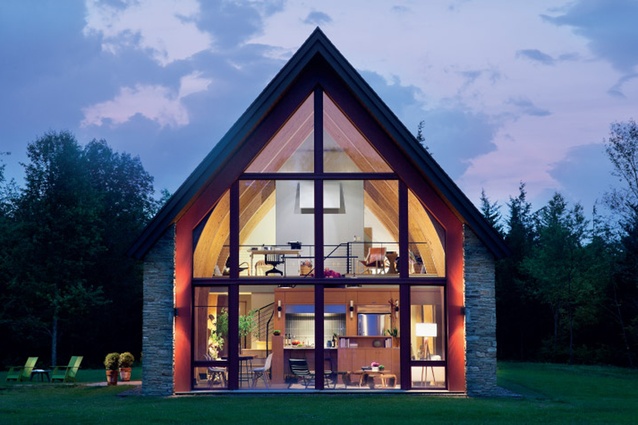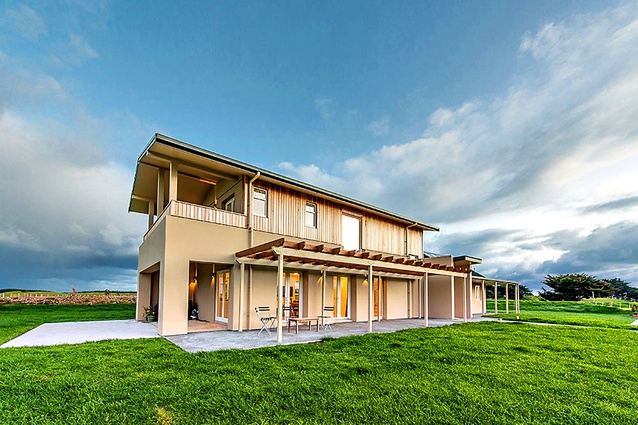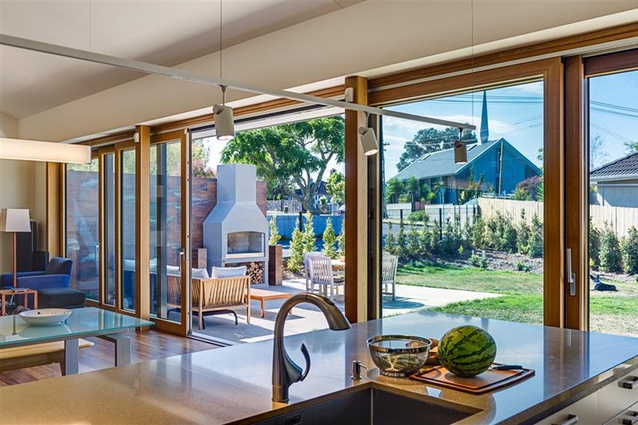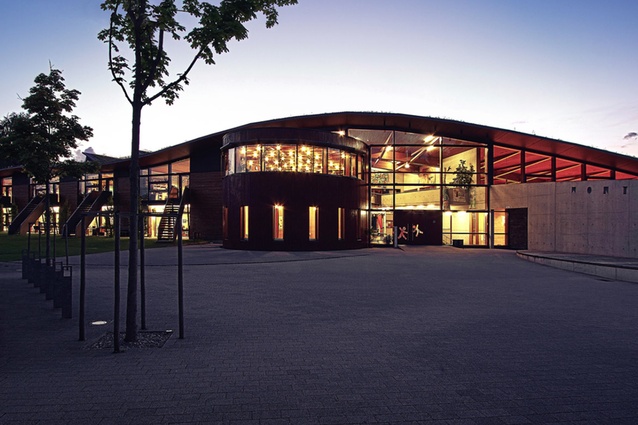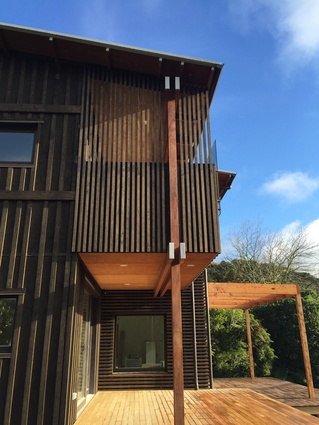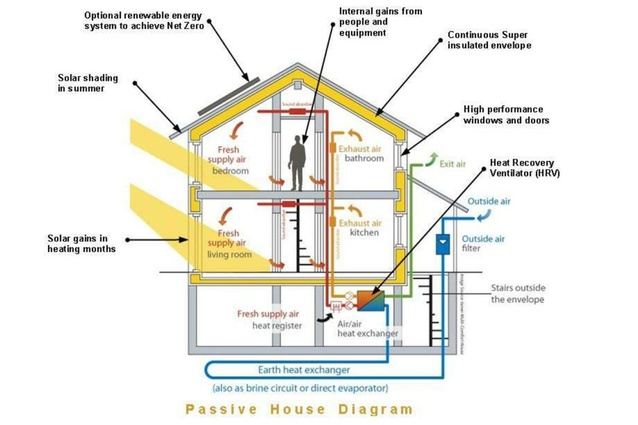Active for Passive House
ArchitectureNow talks with Glenn Murdoch, chairperson of the Passive House Institute New Zealand and Brooke Cholmondeley-Smith, director at MOAA architects and certified Passive House designer, about the history and current status of the industry here in New Zealand and what the future could hold for our houses.

ArchitectureNow: How long has Passive House building been active in New Zealand, and how did it come about?
Glenn Murdoch (GM): Passive House began gaining momentum in 2010 when a group of interested people coalesced and began advocating for, and designing and building Passive Houses. Since then there has been significant interest with Passive Houses being planned and built across New Zealand.

Brooke Cholmondeley-Smith (BCS): The Passive House framework was designed in Germany in the 1980s. The first certified Passive House in New Zealand was completed in 2012. MOAA architects then completed New Zealand’s second certified Passive House in early 2013. Since then, MOAA architects have completed a number of Passive Houses throughout the North Island.
The inaugural New Zealand Passive House Conference took place in 2015 in Auckland. The Passive House framework arrived in New Zealand as one of the only proven evidence-based building performance criteria in the world. The framework is flexible and it can be utilised to design any type of building, which was the real benefit that enticed us to adopt it. As architects we are not overly restricted in our approach to different projects and client requests.
ArchitectureNow: What is the Passive House industry like here in the current ‘green and sustainable’ climate, and is it growing quickly?
GM: Passive House doesn’t really fit into the traditional ‘green’ model, although it can certainly be used within those typical models. Passive House is just a sensible choice for everyone as it provides benefits that everybody desires. For example, guaranteed healthy and comfortable indoor climates, fresh air, economic security, structural durability.
One of the fundamental differences between Passive House and traditional ‘green’ models is that Passive House is scientifically robust. It has been proven in thousands of buildings across the world (from cold climates like Scandinavia to hot climates like the Middle East) to provide comfortable, healthy and low-cost buildings across a range of building types, from individual homes to apartment buildings, offices, schools, kindergartens and even fire stations!
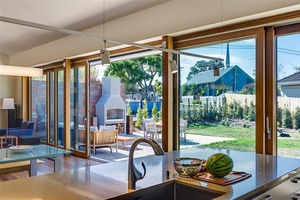
BCS: There is an overwhelming drive to lift the energy performance of New Zealand homes. The general level of housing performance in New Zealand is limited. It is encouraging that a number of professionals, developers and builders are trying to solve this issue on multiple fronts. Although other performance methods are certainly an improvement from the general housing stock, Passive House is the only performance-based system focusing on a “fabric-first approach” to the building envelope in order to “lock in” the performance for the life of the building.
The Passive House framework requires blower-door testing to be performed during and after the build, which is one of the critical differences between other performance systems. The testing verifies the building’s performance and construction quality and removes all guesswork or assumptions about the buildings performance - an aspect that our Passive clients enjoy.
ArchitectureNow: What are the basic tenets of Passive House, in a nutshell?
GM: The basic principle is simply setting a performance benchmark that both ensures healthy and comfortable indoor environments but is also practical and achievable; it isn’t over the top. This means that there are no restrictions on building design, construction system or material choice.
The Passive House standards sets limits for heating energy use, air-tightness and overall energy use. In practice, careful design coupled with a well detailed and constructed building fabric (i.e. the outer floors, walls and roofs of your building) provides this. A well detailed and constructed building fabric will have appropriate levels of airtight insulation, high quality windows and doors and a thermal bridge-free design.
Airtightness is an important concept to understand. Airtightness doesn’t mean living in a plastic bag where you can’t open the windows. Airtightness does mean stopping draughts, ensuring your insulation performs as designed and eliminating condensation and mould within your building’s structure.
ArchitectureNow: Brooke, how is MOAA involved in Passive House? What projects do you have coming up?
BCS: MOAA architects are involved in a number of Passive House projects around the North Island. MOAA has completed a range of new Passive House family homes, baches and smaller boutique buildings. MOAA has utilized some of the Passive House principles in education and commercial buildings. This is a very exciting area for us as the benefits are being experienced beyond the family home.
To help build awareness of the New Zealand Passive House scene, MOAA co-wrote an article in 2014 which was presented at the International Passive House conference in Aachen, Germany, which outlined the in-use performance of certified Passive Houses in New Zealand. The article was also published online by the International Passive House Institute. We are passionate about creating high-performance and comfortable buildings for the unique New Zealand climate.
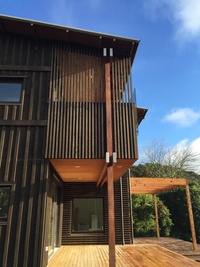
ArchitectureNow: What is your favorite Passive House in New Zealand, and overseas?
GM: This is a difficult question; there are so many great examples! I think my favourite New Zealand example is the Roxborough home in Greytown by eHaus. This home demonstrates really well both that a Passive House needn’t be out of the ordinary, it can be an everyday home, and also illustrates that Passive Houses are not expensive. This home was the winner of the cost-effective category at the 2015 South Pacific Passive House Design Awards.
Overseas I think my favourite is the Montessori school in Aufkirchen, Germany. This shows us how little design is constrained by choosing to build a certified Passive House.
BCS: MOAA architects are about to complete another Passive House at Lake Tarawera, in the Rotorua district. This house has been designed within a challenging environment and we are particularly pleased with the development of the technical aspects of this Passive House.
Nationally there are a number of good examples to be found, depending on your preferred design and aesthetics. Internationally there are a number of exemplar buildings. Different nations and their respective culture and society bestow their unique aesthetic onto the Passive House framework, which illustrates the criteria’s versatility. We particularly like the first Passive House built in New York and some of the medium density designs being built in the UK, which are very applicable to New Zealand.
ArchitectureNow: Do you think there is enough information out there about Passive House at present for potential clients/homeowners?
BCS: There is a lot of information pertaining to the specialised products and equipment for the Passive House market, however only a certified Passive House designer will know and be able to explain how they all work and perform together as a whole. They have expert knowledge about how to increase a buildings performance, what not to do, and how to inform clients of how changes to the design will affect the performance of the building, before it is built. This knowledge therefore provides architects and designers with the ability to make choices about aesthetics, space and performance concurrently.
There is an amazing amount of information in the marketplace for consumers. MOAA architects have a number of clients who have spent years researching individual products only to find that they are generally superfluous if you take a fabric-first approach. We encourage people to start a conversation with a certified Passive House designer or the New Zealand Passive House Institute to find out more about the proven benefits of a certified Passive House.
ArchitectureNow: What do you think the future holds for Passive Houses in relation to architecture as a whole?
GM: Overseas experience shows that Passive House starts slowly but very quickly gains momentum. In New Zealand we are just at the beginning of the steep upward trend and I think this will be increased by pressures such as climate change, rising energy costs and New Zealanders generally being tired of living in houses that are unhealthy. We see the future as homes that we can live in rather than survive in.

